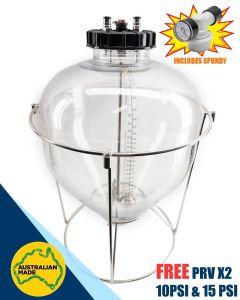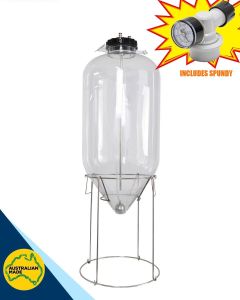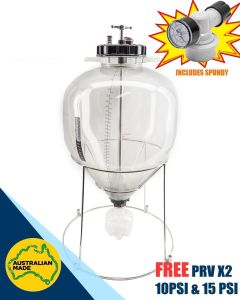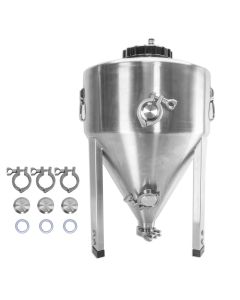
Pressure Fermentation Recommended Practices
Pressure fermentation has long been known to suppress the formation of certain esters during the fermentation process. In addition, fermenting at room temperature also greatly reduces diacetyl, the butterscotch flavor in some beers. Diacetyl is usually considered a flaw in lagers in detectable concentrations. But in low levels adds a fullness to the body. Fermenting under pressure, and at room temperature, allows homebrewers to make a lager-like “clean” beer if temperature control is not available. Ales, on the other hand, derive their unique flavor profiles from the esters formed during fermentation, so pressure fermentation is detrimental to most ale styles.
Blichmann Engineering and White Labs teamed up a number of years ago to determine the best pressure for balancing the effects of pressure on ester suppression, diacetyl production, hop expression, and overall flavor and body. A test was performed on a Munich Helles. One batch was split into 4 fermenters. An identical pitch of yeast and oxygen were added. The control fermenter followed a traditional cold lager fermentation with a diacetyl rest. The other three were fermented at room temperature; one at 0 PSI (atm pressure), one at 15 PSI (1 BAR), and one at 30 PSI (2 BAR).
All beers were analyzed with a gas chromatograph. In addition a blind tasting panel comprised of highly experienced and highly ranked beer judges (National rank and above) was done for qualitative analysis. The list below summarizes the results:
· Traditional Lager: low ester levels, low to moderate diacetyl, malty, balanced hop character
· 0 PSI: High esters for style, very low diacetyl, noticeable fruity esters, mild bitterness
· 15 PSI : Lower esters than traditional lager, very low diacetyl. Malt forward with balanced hop character. Slightly less malty than traditional lager profile.
· 30 PSI: Very low esters and diacetyl. Muted maltiness, hop bitterness somewhat harsh.
Based on the results, the maltiest and best hop balanced beer is still the traditional lager method, most likely due to the low levels of diacetyl adding perceived body and maltiness. A close second was the 1 BAR (15 PSI) room temperature brew. Above this pressure, maltiness and body are noticeably reduced, and hop expression is notably harsher. Wrapping it all up, pressure fermentation is a simple way to make great tasting lagers without all the cooling equipment and controls normally needed for lagers. But keep the pressure to that 10-15 PSI range for the best results.
Pressure Fermentation Quantative Analysis








Below you will find some of the best, most reliable and safe pressure fermenters you can buy in Australia. All Keg King PET Fermenters are even made right here in Australia.




